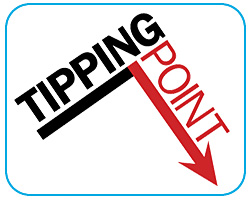
I just took my 13 year old daughter and her thrill seeking friend to Magic Mountain, Six Flags: the world of leaping, dashing, twisting, diving, dare-to-scream roller coasters. The girls couldn’t wait to experience fear, thrills and adrenaline gushing responses from riding on a roller coaster that lasted anywhere from 30 seconds to 4 minutes. I too had a little bit of “add it to my bucket list” eagerness. So we left super early to drive 5 hours to get there just in time for Magic Mountain to open.
When we arrived we anxiously reached our first ride to find out it was temporarily closed. We rushed to the second ride available, the Ninja Rollercoaster, and enjoyed the twist, turns and jolts. The girls reported that the ride was “decent”; it caught their breath, excited them and they experienced a temporary sense of relief when it was over. We then anxiously moved to the second roller coaster, the Collosus; the longest roller coaster in the world (4 minutes). We all hopped on to experience neck thrashing, body jiving and intermittent moments of breath holding (okay, maybe that was just me). For four complete minutes my blood was pumping, pupils were dilated while I felt entirely power-less in any potential outcome (death did cross my mind). ALL of these symptoms: the rush, the high and a low, invoke a stress response in the body. The same stress response that when overextended in a chronic state can precede chronic inflammation and illness (and often without us even knowing it). The same stress response that is my focus on getting back in balance for all of my clients. And yet I was electing to experience this VOLUNTARILY.
Don’t get me wrong. I wouldn’t have changed one decision. It was super fun. But after cracking my neck on the Colossus I elected that any major roller coasters were amiss for me moving forward. The girls, on the contrary, enjoyed pursuing even more aggressive rides.
Typically when I explain the stress response I use the example of raking the yard when a bear appears and that the stress response doesn’t end until the bear leaves. In a chronic state the body “sees the bear” all day long. Following their 250 foot vertical drop at the Superman ride, my daughter she told me she was exhausted and summarized so eloquently: “I feel like I’ve seen 10 bears today”. We took full advantage of a restful evening of recovery.
I wasn’t sure whether to title this post “Stress that’s fun” or “Fun that’s stress”. Regardless, I learned another new thing that day. Keep track of your external stressors. Often times we are introducing new ones without even knowing it.
For us thrill seekers I now can use the example of a rollercoaster ride and set the bear, bathtub and kettle metaphors on the side.
Be well,
Lynn

 November 3rd, 2015
November 3rd, 2015  Lynn
Lynn  Posted in
Posted in  Tags:
Tags: 

